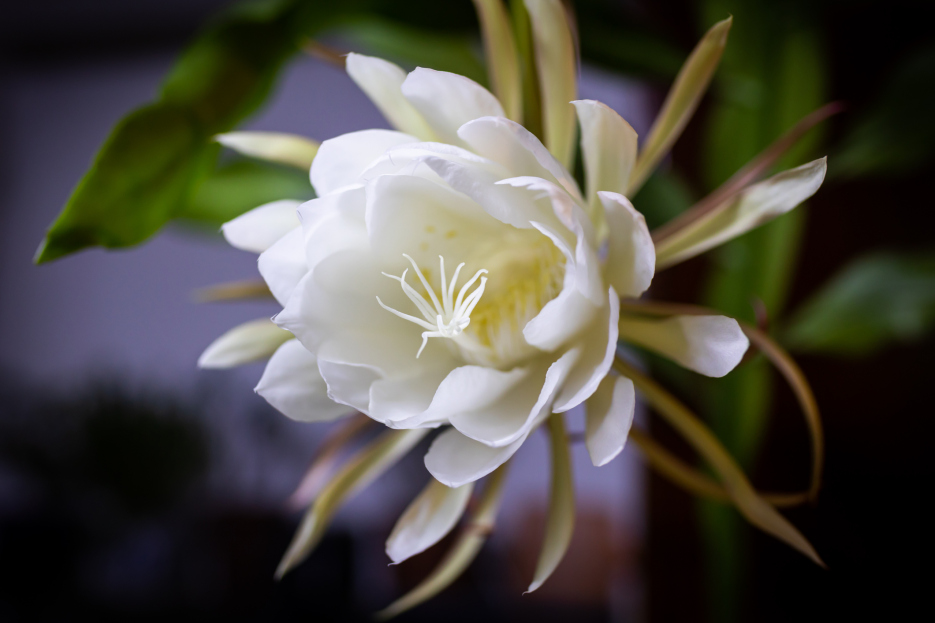
The Queen of the Night (Epiphyllum oxypetalum) is a stunning and unique houseplant known for its large, fragrant blooms that open only at night. This epiphytic cactus is easy to care for and rewards plant lovers with an extraordinary floral display. Here’s everything you need to know to keep your Queen of the Night healthy and thriving.
The Queen of the Night prefers bright, indirect light. It thrives near an east- or west-facing window, where it can receive gentle morning or late afternoon sunlight. Too much direct sunlight can scorch its leaves, while too little light may prevent blooming.
Water your plant thoroughly when the top inch of soil feels dry. As an epiphytic cactus, it enjoys a slightly moist environment but should never be left sitting in water. Overwatering can lead to root rot, so ensure your pot has proper drainage or discard any excess water after watering to prevent root rot.
Use a well-draining soil mix, such as a combination of cactus mix and orchid bark. A pot with drainage holes is essential to prevent water from accumulating at the roots.
The Queen of the Night thrives in warm temperatures between 65–80°F (18–27°C) and enjoys moderate to high humidity. If your indoor air is dry, mist the plant occasionally or place a tray of water with pebbles nearby to increase humidity.
Feed your Queen of the Night with a balanced liquid fertilizer diluted to half strength every two weeks during the growing season (spring and summer). Reduce feeding in the fall and winter when growth slows down.
Prune the plant after flowering to encourage bushier growth and remove any dead or damaged stems. Since it grows long, trailing stems, consider providing support or letting it cascade from a hanging basket.
The Queen of the Night can be easily propagated from stem cuttings. To propagate:
The Queen of the Night is famous for its spectacular nocturnal blooms, but it requires specific conditions to flower. To encourage blooming:
The Queen of the Night plant (Epiphyllum oxypetalum) is a pet-friendly, night-blooming cactus that thrives in bright, indirect light, needs well-draining soil, prefers occasional watering when the topsoil dries out, enjoys a bit of humidity, and rewards patience with stunning, fragrant blooms in late spring or summer.
With the right care, the Queen of the Night will reward you with its spectacular, fragrant blooms. Be patient, as it may take a few years to bloom, but the breathtaking nighttime flowers are well worth the wait!
Are you growing a Queen of the Night? Share your experience and blooming success in the comments below!